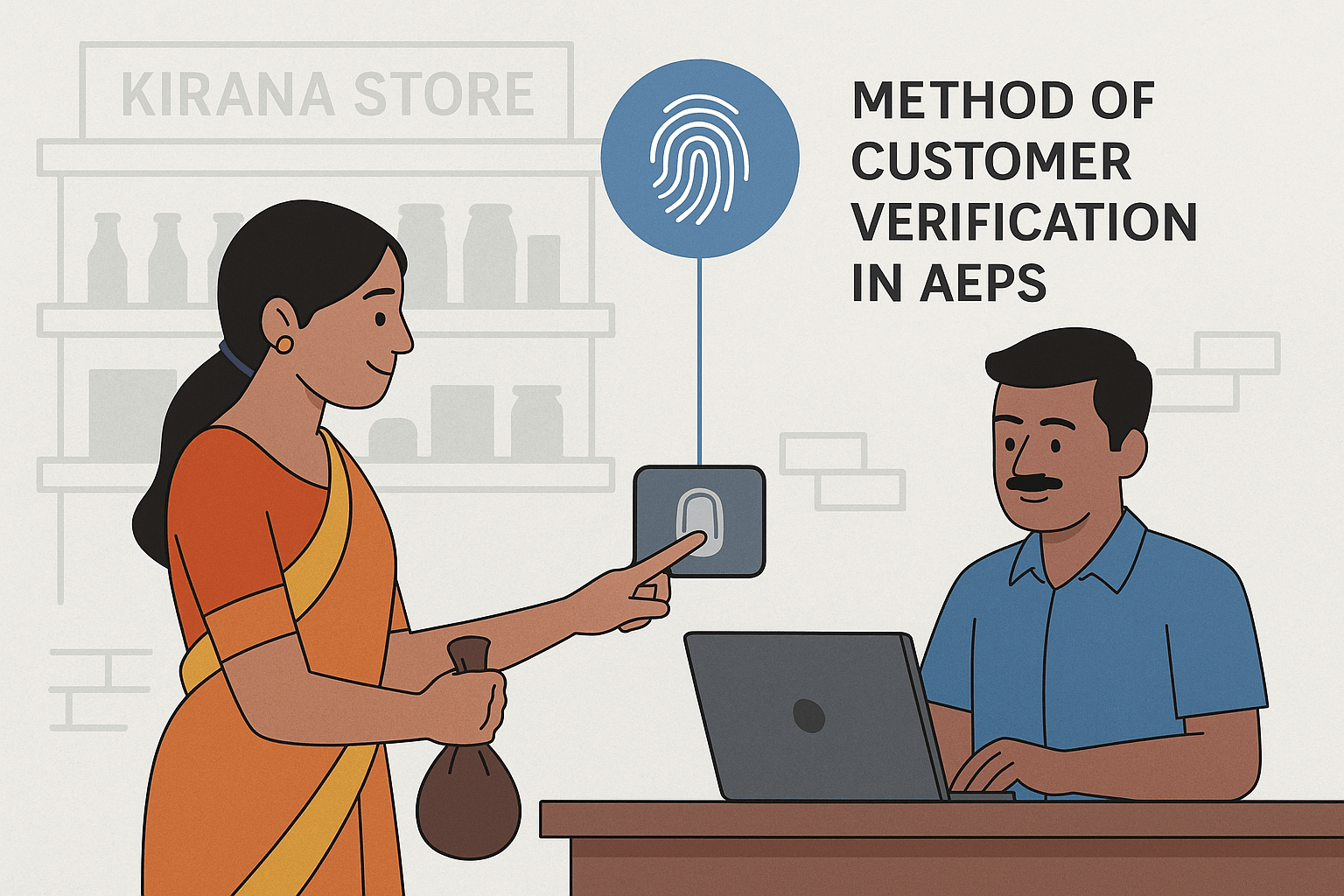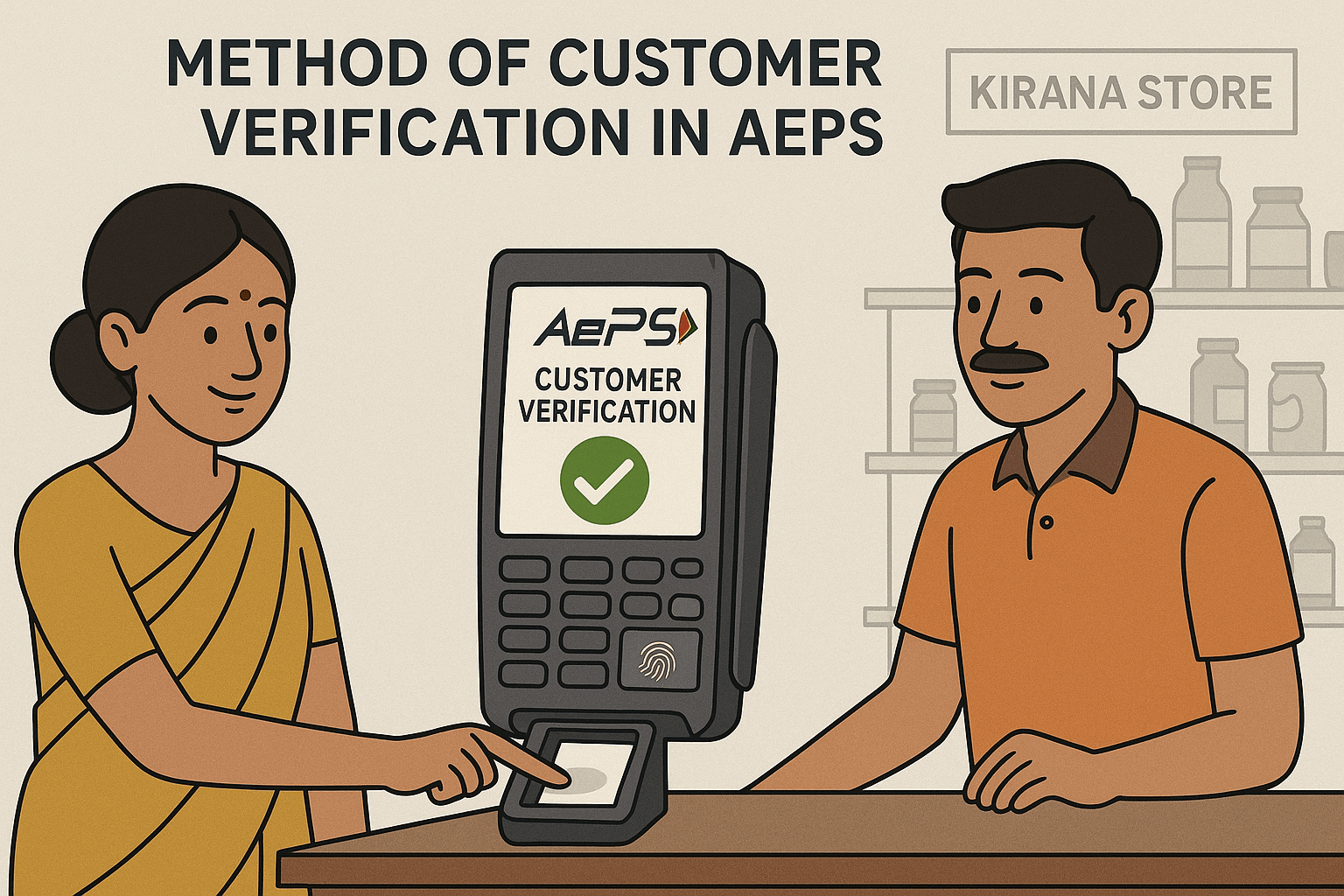In the vast landscape of Indian digital finance, a silent revolution has (method of customer verification in AEPS) been banking the unbanked. At the heart of this revolution lies a simple yet powerful process: the method of customer verification in AEPS. If you’ve ever wondered how someone can withdraw money or check their balance at a local kirana store without a debit card or phone, you’re about to discover the ingenious system that makes it all possible. This isn’t just a technical procedure; it’s the digital key that unlocks financial services for millions.
What is AEPS? Setting the Stage
Before we dive into the verification method, let’s quickly understand the stage it operates on. The Aadhaar Enabled Payment System (AEPS) is a bank-led model that allows you to conduct basic banking transactions at a MicroATM (a point-of-sale machine) using your Aadhaar number and biometric authentication.
Launched by the National Payments Corporation of India (NPCI), its primary goal was profound: to bring financial services to the doorstep of every Indian, especially those in rural and remote areas who may not have debit cards, smartphones, or easy access to a bank branch. The magic of AEPS is that it requires only two things from a customer:
-
Their 12-digit Aadhaar number.
-
Their fingerprint (or iris scan), captured during Aadhaar enrollment.
But how does the system know it’s really you? This is where the critical method of customer verification in AEPS comes into play.

The Core Engine: Aadhaar-Based Biometric Authentication
The primary and most crucial method of customer verification in AEPS is Aadhaar-based biometric authentication. This process is not a simple password check; it’s a sophisticated, secure, and government-backed identity validation system. Let’s break it down step-by-step.
Step 1: Initiating the Transaction
A customer visits an AEPS agent (a bank correspondent or a local shop owner with a MicroATM terminal). They select the service they need—cash withdrawal, balance inquiry, fund transfer, or a mini statement.
Step 2: Providing Credentials
The customer enters their:
-
Aadhaar Number: This acts as your unique financial address, linking you to your bank account(s) that have been seeded (linked) with Aadhaar.
-
Bank Name (IIN): They select the name of their bank or input the bank’s Issuer Identification Number (IIN).
-
Biometric Data: They place their finger on the biometric scanner attached to the MicroATM.
Step 3: The Verification Journey
This is where the real magic happens. The entered data does not stay on the MicroATM. Instead, it is encrypted and sent on a secure journey:
-
To the Acquiring Bank: The transaction request first goes to the customer’s bank (the bank where the MicroATM is registered).
-
To the NPCI: The acquiring bank forwards the request to the National Payments Corporation of India (NPCI), which acts as the central switch or router for all AEPS transactions.
-
To the UIDAI: NPCI routes the authentication request to the Unique Identification Authority of India (UIDAI)—the guardian of the Aadhaar database.
-
Biometric Matching: UIDAI’s Central Identities Data Repository (CIDR) receives the request. It uses the provided Aadhaar number to find the customer’s stored biometric template. It then compares the freshly scanned fingerprint against this stored template.
-
The Verdict: UIDAI’s system performs a “Yes/No” authentication. It simply confirms whether the biometrics match or not. Crucially, it does not return any personal or biometric data back to the merchant or the bank. It only sends an authentication response.
Step 4: Completing the Transaction
If the authentication is successful (a “Yes”), NPCI informs the customer’s bank (the issuer bank) to approve the transaction. The bank then processes the request—debiting the account for a withdrawal or sending the balance information. The entire process, this complex digital dance, often happens in a matter of seconds.
Why This Method is a Game-Changer
This specific method of customer verification in AEPS offers unparalleled advantages:
-
Inclusivity: It eliminates the need for remembering PINs, owning a smartphone, or being literate. Your body is your password.
-
Security: Biometrics are extremely difficult to forge or replicate, making transactions more secure than a simple 4-digit PIN that can be shoulder-surfed or guessed.
-
Interoperability: A single Aadhaar number can be used to access accounts in any bank that is part of the AEPS network, breaking down barriers between financial institutions.
-
Reduced Fraud: The end-to-end encryption and the central role of UIDAI significantly reduce the potential for identity theft and transaction fraud.

Beyond Biometrics: The Role of UIDAI and Security
A common concern is privacy: “Is my biometric data shared with everyone?” The answer is a resounding no. The UIDAI system is designed with a “Privacy by Design” principle.
-
No Data Storage: The merchant’s machine or the bank does not store your fingerprints. The scan is used only for that single authentication event and is not saved.
-
Yes/No Only: As mentioned, UIDAI only returns an authentication result, not any personal data. It’s a closed-loop system focused solely on verification.
-
Consent-Based: Transactions require the customer’s physical presence and active participation (placing their finger on the scanner), ensuring explicit consent.
According to a 2022 report by NPCI, the AEPS network processes over 200 million transactions per month, a testament to its reliability and widespread adoption. This volume underscores the critical importance of its robust verification method.
Challenges and the Future
No system is perfect. The method of customer verification in AEPS can sometimes face challenges:
-
Biometric Failures: Worn-out fingerprints from manual labor, aging, or scanner issues can sometimes lead to authentication failures.
-
Connectivity Issues: Remote areas with poor internet connectivity can disrupt the real-time authentication process.
To address this, UIDAI has introduced features like “Virtual ID” for added privacy and is continuously working on improving fingerprint recognition algorithms. The future may also see a greater integration of facial recognition as a complementary authentication method.
Conclusion
The method of customer verification in AEPS is far more than a technical checkbox. It is the foundational trust mechanism that enables a massive financial inclusion initiative. By leveraging the unique and secure combination of Aadhaar and biometrics, AEPS has successfully created a cardless, phone-less, and paperless banking ecosystem that is accessible to every Indian. It demonstrates how technology, when designed thoughtfully, can be both incredibly powerful and profoundly human-centric, turning a simple fingerprint into a key for economic empowerment.
Frequently Asked Questions (FAQs)
1. What happens if my fingerprint doesn’t work on the AEPS machine?
This is a common issue, often due to rough fingerprints. The solution is to ensure your fingers are clean and dry. If it persistently fails, you should update your biometrics at an Aadhaar Enrollment Center. In some cases, iris authentication is also an option if the MicroATM supports it.
2. Is the AEPS verification method safe? Can someone duplicate my fingerprint?
The system is designed to be very secure. UIDAI uses live fingerprint detection technology that checks for pulse and other factors to ensure a real finger is being used, making it extremely difficult to fool with a replica. The end-to-end encryption of data also prevents interception.
3. Do I need to link my bank account with Aadhaar to use AEPS?
Yes, absolutely. For the method of customer verification in AEPS to work, your bank account must be seeded (linked) with your Aadhaar number. This allows the system to correctly identify and route the transaction to your specific bank account.
4. Can I use AEPS if I have accounts in multiple banks?
Yes. During the transaction, you will be asked to specify which bank you want to access (by selecting the bank name or IIN number). Your Aadhaar number must be linked to the account in that specific bank for the transaction to be successful.
5. What kind of transactions can I do using AEPS?
AEPS supports four primary types of “finger banking” services:
-
Cash Withdrawal
-
Cash Deposit
-
Balance Inquiry
-
Fund Transfer (Aadhaar to Aadhaar)
-
Mini Statement
Disclaimer: This article is for educational and informational purposes only. The information contained herein is based on publicly available data and resources from NPCI and UIDAI. While we strive for accuracy, the specific technical processes and security protocols may be updated by the governing authorities. We do not claim ownership of the AEPS system or its underlying technology. If you have any concerns regarding the content of this post, including issues related to ownership or copyright, please visit our DMCA page and follow the guide for content removal. Always refer to official NPCI and UIDAI channels for the most current and authoritative information.
